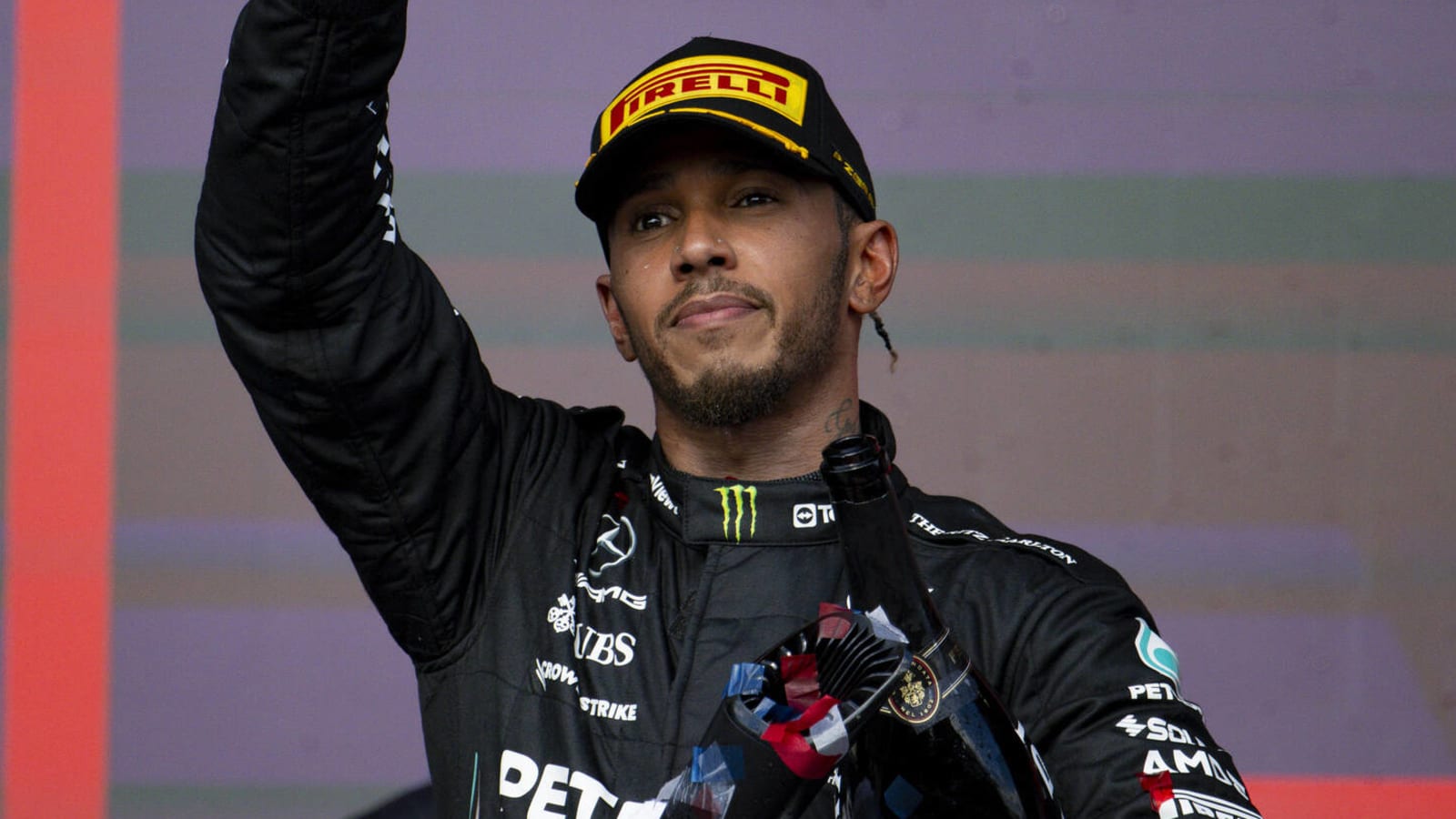
Lewis Hamilton, Charles Leclerc F1 disqualifications: All your questions answered
The United States Grand Prix took place this weekend at the Circuit of the Americas in Austin, Texas. It was a fantastic race, with Max Verstappen, Lewis Hamilton and Lando Norris all fighting for a victory until the final lap.
But the real drama came later. Several hours after the Grand Prix ended — and well after the trophies and points were awarded — word broke that Mercedes' Hamilton and Ferrari's Charles Leclerc were retroactively disqualified.
BREAKING: Lewis Hamilton and Charles Leclerc have been disqualified from the 2023 United States Grand Prix for a technical infringement#F1 #USGP pic.twitter.com/HHNlf5urLW
— Formula 1 (@F1) October 23, 2023
Hamilton, who originally finished in second place, and Leclerc, who finished sixth, were removed from the U. S. Grand Prix standings altogether and stripped of their points.
Rumors flew after the decision, with some fans crying foul.
Here's the real story of Hamilton's and Leclerc's untimely disqualifications from the U. S. Grand Prix.
How and why were Hamilton and Leclerc disqualified? Formula One is a sport with specific regulations. Its rule book is 183 pages long and constantly updated. Everything about F1 cars, from their size to their weight to their technical specifications, is determined by the rule book and consistent across all 10 F1 teams.
While some rules are open to interpretation, many are not. F1 regularly checks competition vehicles to ensure they are within the set tech specs at all times. That's precisely what it did at the U. S. Grand Prix. After the race finished, the F1 governing body did a check on the vehicles of Verstappen, Hamilton, Norris and Leclerc. Its inspectors measured their "skid blocks," pieces of bodywork that must be at least nine millimeters thick, and found them to be too thin on Hamilton's and Leclerc's cars, leading to their disqualification.
Why did F1 only test four cars? There's two reasons for this, and they feed into one another. First, checking cars requires manpower and expertise. F1 simply can't afford to have enough qualified people on the track to test everyone each weekend. To get around this, its checks are often random. You don't hear about them every weekend because they tend to go off without a hitch.
In the case of the U. S. Grand Prix, though, F1 inspectors noticed that Verstappen's, Hamilton's, Norris' and Leclerc's vehicles were running suspiciously low to the ground. That gave them the hunch that their skid blocks might not be compliant.
What is a skid block, and why must it be >9mm thick? A skid block is a plank that stretches underneath an F1 car. It limits the amount of downforce — and therefore speed through corners — an F1 car can generate by quite literally keeping the vehicle from getting too close to tarmac. The rule keeps all F1 cars at the same maximum threshold while maintaining safety.
How did this impact the United States Grand Prix? When Hamilton and Leclerc were disqualified, the drivers behind them all moved up in the rankings. The biggest winner? Williams Racing's American driver Logan Sargeant, who found himself bumped from 12th place to 10th to take home his debut points in F1. He's now the first American driver to score F1 points since Michael Andretti in 1993.
Logan Sargeant becomes the first American #F1 driver to score points since Michael Andretti finished the 1993 Italian GP in P3 over 30 years ago! #USGP pic.twitter.com/sIMm7H1Hkr
— Autosport (@autosport) October 23, 2023
What does this mean for Hamilton and Leclerc in the future? Very little. Both of their cars must be altered to meet specifications for the Mexican Grand Prix on Sunday, but they will be able to race as normal as long as those changes are made.
More must-reads:
- Cavaliers could be forced to choose between star guard pairing
- Caitlin Clark's debut was most-watched WNBA game in more than 20 years
- The 'Most career 40-point playoff games' quiz
Breaking News
Customize Your Newsletter
 +
+
Get the latest news and rumors, customized to your favorite sports and teams. Emailed daily. Always free!

